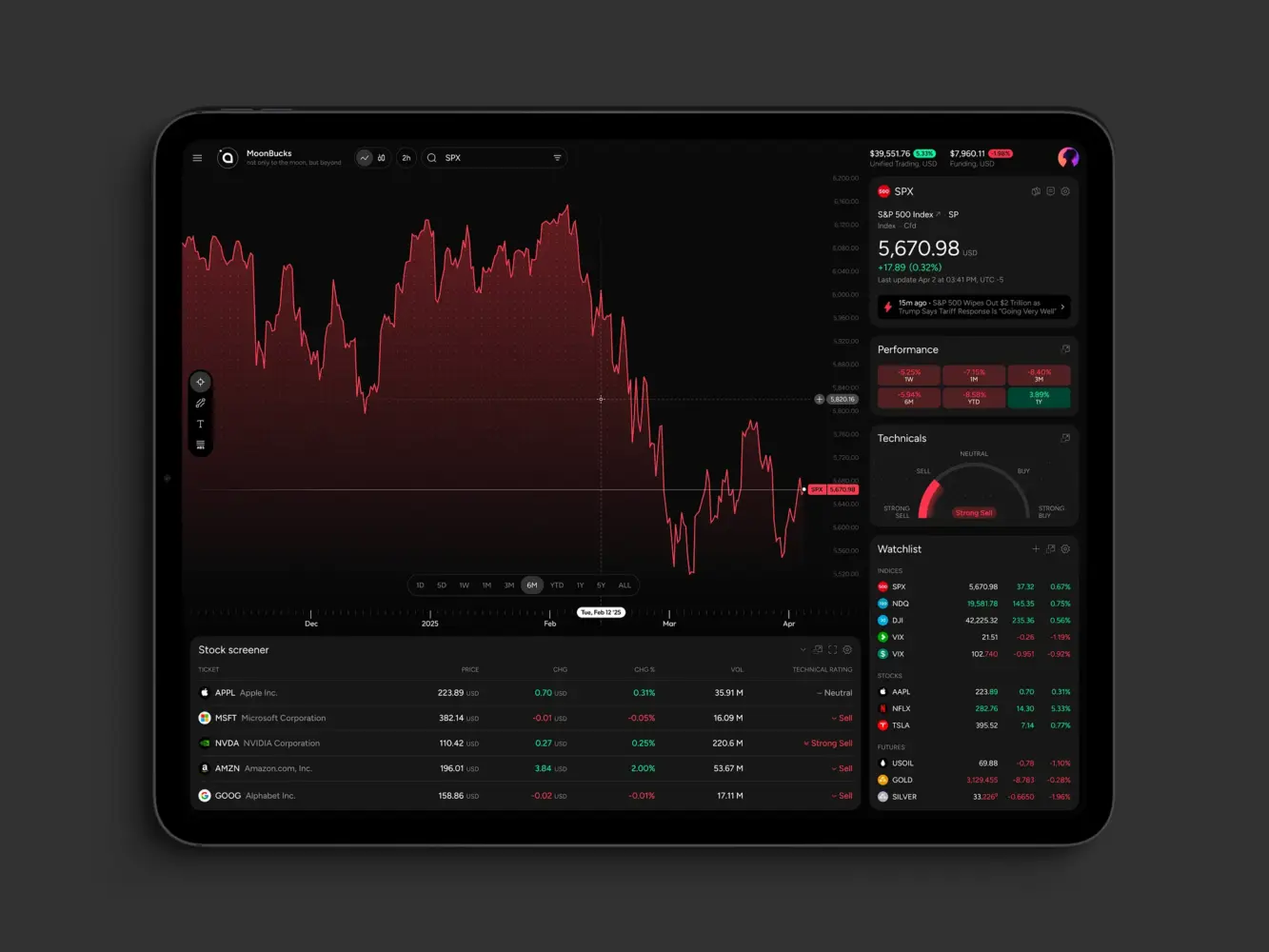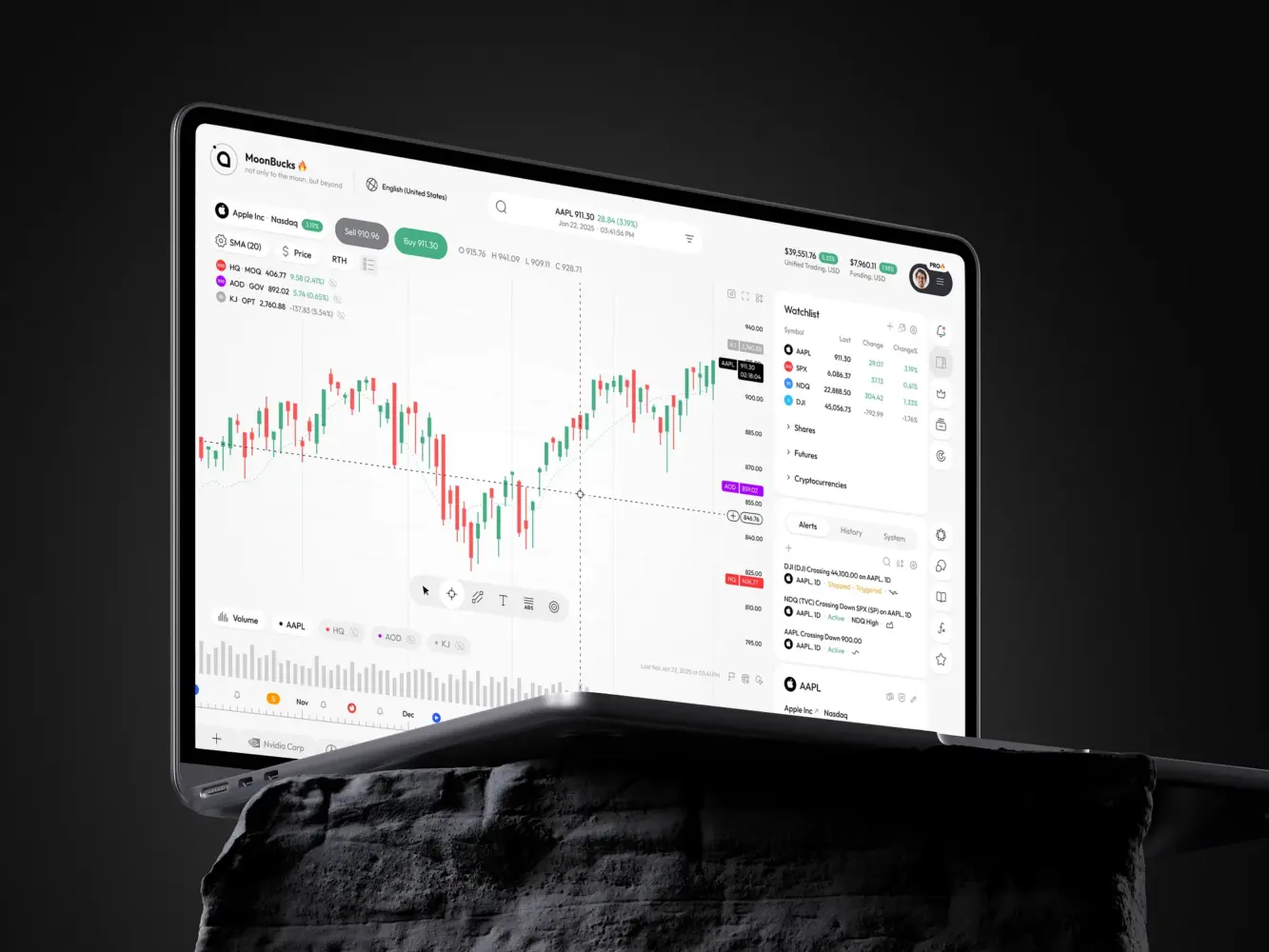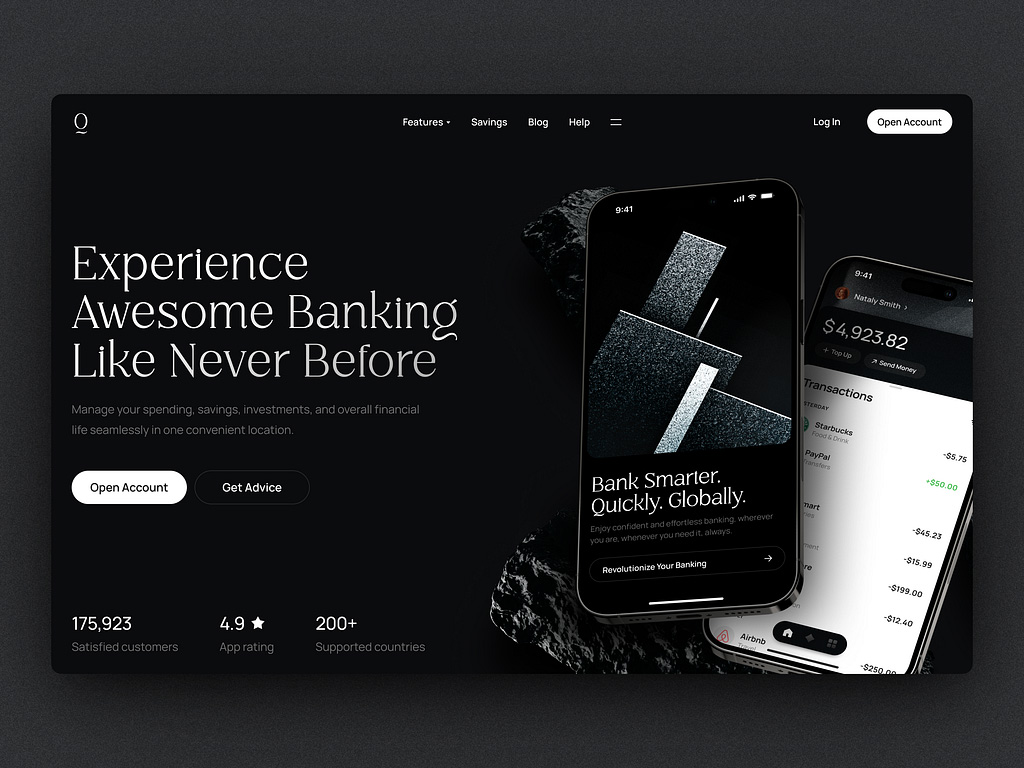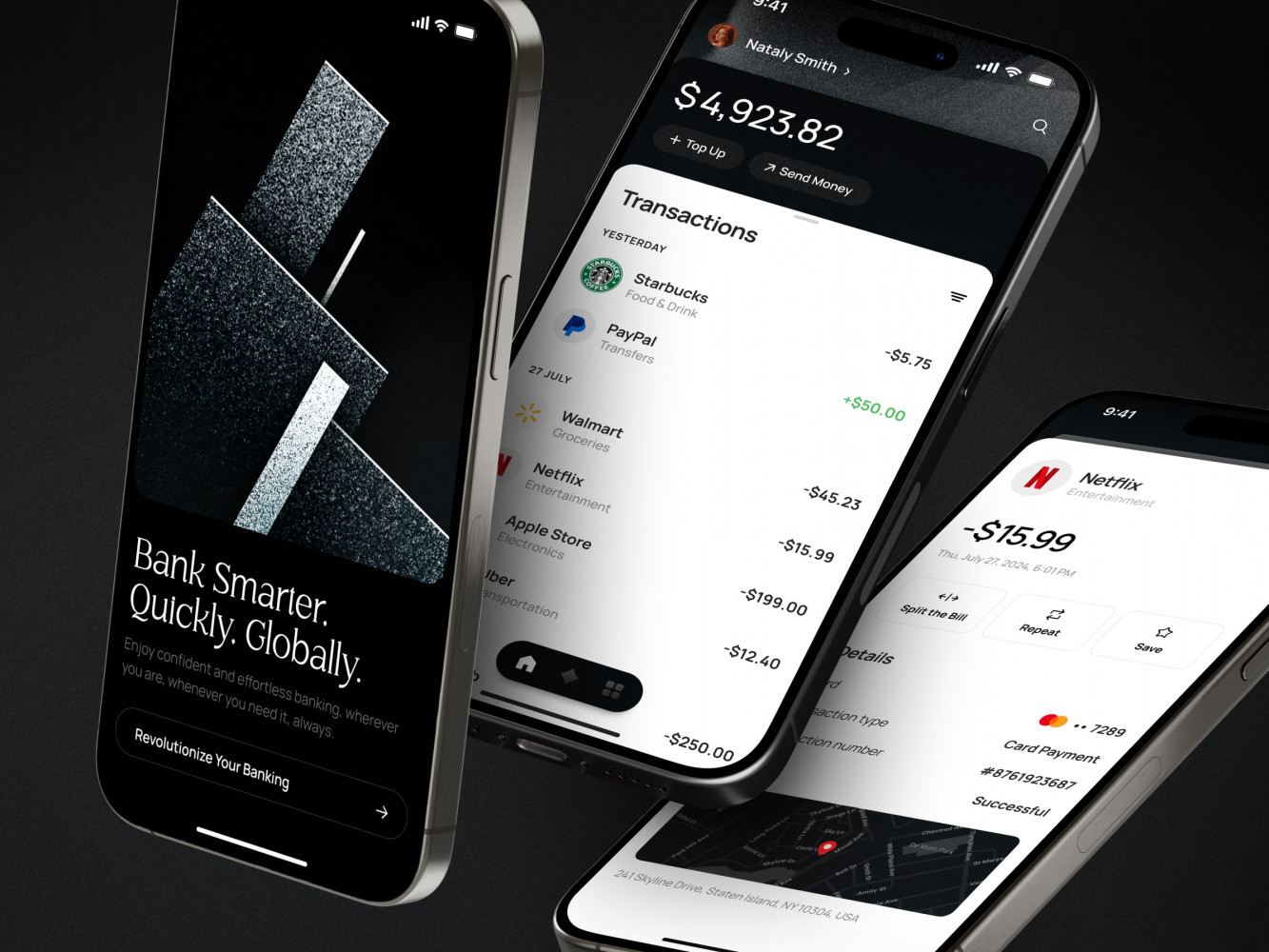For those who prefer to listen rather than read, this article is also available as a podcast on Spotify.
Contents:
In fintech, speed isn’t just an advantage—it’s survival. Markets move fast, and the systems behind those trades have to move even faster. That’s why more companies are choosing to build their own trading platforms instead of relying on off-the-shelf tools. When you develop something tailored to your business, you’re not just getting software. You’re building a system that understands how you trade, how you manage risk, and how you want to grow.
Custom trading software development gives you control. You decide what gets automated, how your data is handled, and which technologies drive your decisions. There’s no need to wait for a vendor to roll out an update or adapt to features that don’t quite fit. You set the pace—and the limits. For many firms, that flexibility is the difference between staying competitive and falling behind.
There’s also the matter of trust. In trading, data security and reliability are everything. When you own the platform, you know exactly how it’s built and where every piece of information goes. You can optimize performance, protect sensitive algorithms, and fine-tune execution speed to the millisecond.
This guide takes a closer look at what it really takes to build a custom trading platform—from the first technical decisions to the tools and development process that make it all work. Along the way, you’ll find insights from software teams who’ve helped trading firms turn ambitious ideas into stable, scalable products built for the real world.
How to Build a Custom Trading Platform
It’s not just a matter of writing code to build a custom trading platform; it’s a big engineering project that involves finance, infrastructure, and design. Most of the time, the steps are the same: figure out what you need, design the system around it, and build it one piece at a time, keeping performance and safety in mind. So, here are the steps to follow:
1. Start with the basics—what are you building and why?
Before you start coding, you need to know who the platform is for and what it needs to do. Is it for people who trade every day? A brokerage? A fund running automated strategies?
List the essentials—live market data, order execution, risk control, analytics—and decide how success will be measured. For example, how fast should an order go through? How much downtime is acceptable? Setting these expectations early saves months of rework later.
2. Design how the system fits together
A good trading platform is really a network of smaller systems talking to each other: data feeds, trading logic, execution, reporting.
Map how information moves—where it enters (from exchanges or data vendors), how it’s processed, and where it ends up (user interface, risk reports, storage). You don’t need to over-engineer it at the start, but having a clear flow helps prevent surprises later.

Financial Market Trading Analytics Tool Dashboard by Shakuro
3. Choose your data and connectivity partners wisely
Market data is the heartbeat of any trading system. Decide which exchanges, brokers, or data providers you’ll connect to, and make sure you have backups in case one feed goes down.
If your traders need to execute through multiple venues, plan that from day one—routing logic is hard to bolt on later.
4. Pick a tech stack that fits the job
Not every part of the platform has the same performance needs. The execution layer must be fast and reliable; analytics can be more flexible.
Choose languages and tools that your team knows well and that can handle the required load. Reliable message queues, strong databases, and clear observability tools will make your life easier down the road.
5. Build the foundation first
Start with the basics:
- Market data ingestion that can work with both current and past data.
- Order management that keeps track of every change in state, from “new” to “filled.”
- Risk controls that stop trades when limits are reached.
After that, add the user interface or API so that traders can use the system safely and effectively.
6. Test early, test often
Markets are unpredictable. Your software shouldn’t be. Make a testing environment that is like the real world, with real data, realistic latency, and a lot of it. Stress test the system, pretend that connections drop, and see how it works when it’s under pressure. Bugs in trading software cost a lot of money. Finding them early saves money and trust.
7. Don’t treat security as an afterthought
Trading systems handle sensitive data and real money. Encrypt everything—in transit and at rest—and restrict access tightly.
Keep clear audit trails and logging for compliance. You’ll thank yourself later when an auditor asks for transaction details from six months ago.
8. Prepare for the real world
Once the system is stable, set up automatic deployment and monitoring. Keep an eye on performance, latency, and uptime in real time. Make playbooks for what to do when something goes wrong, because it will happen at some point.
9. Keep tuning and improving
After launch, keep measuring performance. Optimize order execution paths, simplify UI elements that traders find clunky, and schedule reviews for latency and stability. A good trading platform is never “done”—it evolves with the market and its users.
A few lessons from teams who’ve done it before:
- Don’t try to build everything at once. Start small, prove it works, then expand.
- Business logic should stay in the backend. That’s what makes systems easy to test and predict.
- Build tools for replaying market data early. They’re invaluable for debugging and testing strategies.
- Failover systems are not optional. Set them up and test them regularly.
In the end, making a custom trading platform is all about bulding something you can trust: fast, safe, and completely in your control. It takes time, but if you do it right, it will give you a real edge over the competition instead of just being another piece of software.
Key Features of a Custom Trading Platform

Real-Time Predictive Analytics Dashboard Design by Shakuro
There are many different trading platforms, but the best ones all have a few things in common. They are quick, safe, and designed to work like real traders do. These core features are what set apart a product that people trust from one that they stop using after a week, whether you’re making something for professionals or retail investors.
Real-Time Market Data
Markets move fast. Traders need to see those moves the instant they happen, not a second later. That’s why real-time market data is at the heart of any serious platform.
It’s not just about feeding prices onto a screen—it’s about keeping that data clean, accurate, and lightning-fast from the exchange all the way to the user interface. A good system handles the flow without freezing or lagging and presents the numbers clearly enough that traders can react instantly. When the data feels live, the whole platform feels alive with it.
Secure Transactions
In trading, trust is built on security. Users need to know that their money, their credentials, and their strategies are safe—every second of every trade.
That starts with solid encryption and continues with how accounts, orders, and personal data are handled. Nothing should be left unprotected. For regulated markets, compliance adds another layer: KYC and AML checks that make sure people are who they say they are and stop abuse. If done correctly, all of this happens in the background without slowing down the experience.
Advanced Analytics and Automation
Traders these days want more than just a price feed and a chart. They want to know even more. That’s where automation and analytics come in.
A good platform doesn’t just show what’s going on; it also helps users understand why. Technical indicators, backtesting tools, and alert systems built into the software make raw numbers useful. Some teams go even further by adding AI-driven suggestions or automated trading modules that follow rules that have already been set. The goal isn’t to get rid of the trader; it’s to give them better tools and make them react faster.
Multi-Device Support
Nobody trades from just one screen anymore. A good platform follows the user wherever they go—desktop at work, phone on the train, tablet at home.
Prices, charts, and open positions need to stay in sync on all devices without any delays or disconnections. When it works, switching from a laptop to a phone is as easy as continuing a conversation on a different line. That’s what users expect now, and it’s what separates a modern platform from one stuck a decade behind.
Trading Software Development Process
When you build custom trading software, do not expect it to be a straight line. It’s a cycle of research, design, development, and refinement—where every phase depends on a clear understanding of both technology and the financial world it serves. Here’s how trading platform development services usually unfold in practice.
1. Discovery & Market Research
The first step in any project is discovery. The team needs to know who the platform is for and what problems it should solve before they start building anything. Is it for individual investors, institutional clients, or a certain trading desk? Different groups of people have different expectations for speed, interface, and how hard it is to use.
During this stage, business goals are defined—how the platform should perform, what markets it will support, and how it will generate value. Compliance is another key factor. Regulations such as MiFID II in Europe or FINRA in the U.S. influence everything from data storage to reporting. Knowing those rules early helps avoid costly redesigns later.
2. UX/UI Design
Design in trading software isn’t about making things pretty—it’s about making them clear. A trader’s dashboard should surface the right information at exactly the right time, without distraction.
Good design makes it easier to take decisions. Charts, positions, and order details should all be in one place, not spread out over several screens. Smart data visualization makes it possible for users to see patterns right away, and a well-planned user flow makes it easier to make quick trades. The end result is a workspace that feels natural even when you’re under pressure.
3. Choosing the Tech Stack
The technology stack defines how the platform performs and scales. There’s no universal formula—the choice depends on the project’s latency needs, data volume, and integration points.
For backend development, teams often rely on Java, C++, Node.js, or Python, depending on whether performance or flexibility is the priority. On the frontend, frameworks like React, Angular, or Vue power fast and dynamic interfaces that traders can rely on.
Databases such as PostgreSQL, MongoDB, and Redis handle the mix of transactional and time-series data, while cloud infrastructure and tools like AWS, Docker, and Kubernetes make scaling and deployment more predictable. Picking the right stack early helps trading software developers move faster later.
4. Architecture & Security
Trading systems live and die by their architecture. Low latency, high availability, and fault tolerance aren’t optional—they’re the foundation. A solid architecture ensures that even under heavy load, the platform stays responsive and stable.
Security is just as critical. APIs must be protected against unauthorized access, and all communication between services should be encrypted. User credentials, transaction data, and algorithmic logic are sensitive assets; handling them carelessly isn’t an option. Mature trading system development software is built with defense in depth, not as an afterthought.
5. Development & Integration
Once the base is in established, development really gets going. This is where features like order routing, market data feeds, trading algorithms, account management, and payment modules come to life.
Integration is often the hardest part. The platform needs to communicate seamlessly with broker APIs, liquidity providers, and third-party data vendors. For automated trading setups, it might also connect to strategy engines or custom-built bots. Keeping these integrations clean and reliable is what turns a prototype into a production system.
6. Testing & Quality Assurance
Trading platforms operate in real-time environments where downtime or bugs can cost money—sometimes a lot of it. That’s why testing is non-negotiable.
Performance and load testing reveal how the system behaves under pressure. Security testing checks for vulnerabilities before they become incidents. And simulation environments let developers replay actual market conditions to see how trades would execute in the wild. The goal is to find every weak spot before users do.
7. Deployment & Maintenance
After testing, the launch happens, but that’s just the start. Once the platform is live, it needs to be watched all the time to keep latency low and uptime high. Automated alerts, logging, and dashboards help teams react before issues escalate.
Updates that happen on a regular basis add new features, fix security holes, and make things run better. Scaling infrastructure is an ongoing task as the number of users grows. The best developers of trading software see deployment as an ongoing process, not a goal.
Cost of Developing Custom Trading Software

Fintech Website UI Design by Shakuro
Making a trading platform is a big project that needs a lot of money, technology, and long-term planning. The total cost depends on things like the size of the project, the number of integrations needed, and the rules that must be followed.
A trading software development company will usually start by mapping out what kind of platform you want to build. Are you creating a simple MVP for early users or a full-featured product ready for institutional clients? That decision alone can easily change the budget by a factor of three or more.
Scope and features are the biggest drivers of cost. A minimal viable product (MVP) might only have the most important features, like live market data, basic order execution, and managing an account. It’s enough to show that the idea works, get feedback from users, and get early investors interested. To make this kind of MVP, you usually need a small, focused team of backend and frontend developers, a UX designer, and a QA engineer.
On the other hand, a full-scale trading platform—with advanced analytics, automation, multi-asset support, and a custom risk engine—requires a larger, specialized team. That often includes system architects, DevOps engineers, data scientists, and compliance consultants. When a trading platform development company takes on such a project, it also needs to factor in third-party integrations with brokers, KYC/AML modules, and regulatory reporting systems. Those integrations add both time and cost but are essential for operating in regulated markets.
In addition to development, there are also costs for infrastructure and ongoing maintenance. Once the platform is live, hosting, data feeds, and scaling servers can add up to a lot of money each month. Also, it needs regular updates, new features, and security audits.
The cost of building custom trading software isn’t just the time it takes to make it. It’s about how reliable, high-quality, and trustworthy your platform is for the people who use it every day to trade.
Common Challenges and How to Overcome Them
There are some problems that every trading platform has to deal with. Most of them aren’t about flashy features but about what happens behind the scenes—the flow of data, the strength of security, and how well the system holds up as more people start using it.
Handling Real-Time Data
Market data moves fast—and traders expect your platform to move faster. You should not only collect the data but also keep it accurate and in sync across charts, orders, and analytics. Even a small delay can frustrate users or distort results.
The best approach is to design for real time from the start. That means using lightweight data pipelines, monitoring latency, and testing under real trading conditions. It’s the kind of thing that doesn’t stand out when it works—but everyone notices when it doesn’t.
Keeping Security and Uptime Solid
Security in trading software isn’t just a box to check; it’s the foundation. Encryption, two-factor authentication, and careful access control are all normal, but they don’t work as well if the system isn’t watched closely.
Then there’s uptime. Markets don’t sleep, and neither can your platform. Even a few minutes of downtime can cost you a lot of money. That’s why backups, redundancy, and clear recovery plans are just as important as firewalls and encryption. The goal is clear: the platform must always be up.
Scaling Without Losing Stability
When a platform starts growing, it can feel like everything’s fine—until it suddenly isn’t. More users mean more data, more trades, and more pressure on the system. What worked for a hundred users might struggle with a thousand.
To solve these problems, it is recommended to start planning way before the beginning of work itself. It’s easier to grow without losing reliability when you have scalable infrastructure, containerized environments, and cloud-based resources. But the human side is also important. You need to keep an eye on how people use the system, change its capacity, and watch for performance trends. Success means growth, but you have to be careful with it to keep it that way.
Why Partner with a Trading Software Development Company
Making a trading platform is a lot more than just writing code. You should think about data, performance, compliance, and how real traders use the product every day. That’s why a lot of businesses choose to work with a trading software development company that already knows how things work in this field.
Experience Makes a Difference
There’s a big advantage in working with people who’ve done it before. Teams that are familiar with trading platform software development know what can go wrong, like APIs that don’t work properly or compliance problems that come up out of nowhere. They’ve made systems that can handle real trades under real pressure, and that experience pays off.
Skilled trading platform developers also bring their own tools and frameworks that are ready to use. They know which setups work best, how to connect to data providers, and what infrastructure scales effectively. In other words, they don’t waste time coming up with new ways to do things that already work.
Faster Progress, Fewer Headaches
A fintech team that has been around for a while already knows how things work, from putting together market data to testing how well orders are processed, and they can find problems before they happen. That usually means fewer issues and a smoother rollout.
Another significant advantage is compliance. Reading rules like MiFID II or FINRA isn’t simple, and if you get them wrong, your project could be delayed for months. Developers with a lot of experience know how to make systems that follow these rules without making the product too complicated.

Finance Management Mobile App Design by Shakuro
Choosing the Right Partner
Not every company that says it builds fintech products really understands the demands of trading platforms. When you’re picking a partner, look for proof—not just polished websites or case studies, but real examples of systems they’ve launched and maintained.
A good partner will be honest about costs, risks, and timelines. They’ll treat you like an ally, not just a customer, and they’ll care about making something that works long after launch day.
Final Thoughts
It all starts with an idea for a good trading platform. It could be about giving traders better tools, faster execution, or just a better experience overall. After that, it turns into design sketches, development sprints, and long nights spent testing every little thing before it goes live.
But in the end, the real difference comes down to how the platform behaves under pressure. Does it stay fast when the market spikes? Does it keep data safe? Can traders rely on it day after day? Those are the things that separate good products from great ones.
If you’re planning to build your own platform, work with people who understand both technology and trading. The tools and frameworks matter, but what really counts is experience—knowing where systems fail, what users expect, and how to make it all work together.
When you’re ready to take that step, let’s build your trading software together—something real, reliable, and built to last.

